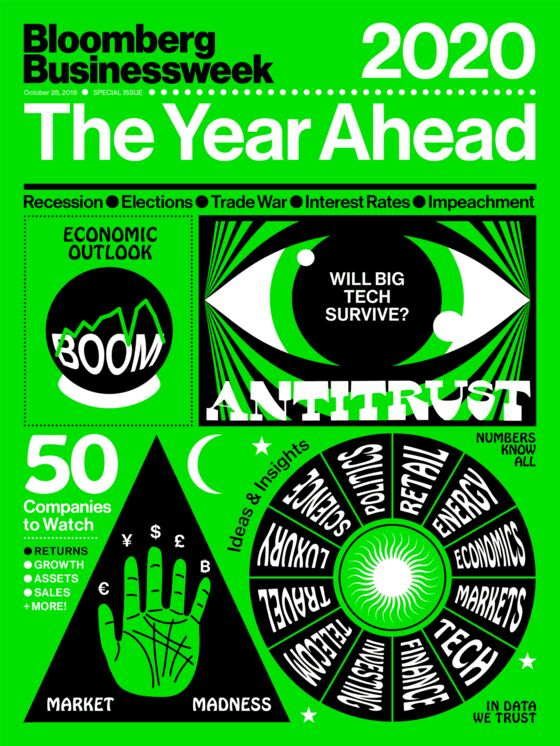From South Korea to Brazil, a Global Guide to Stimulus Plans in 2020
From South Korea to Brazil, a Global Guide to Stimulus Plans in 2020
(Bloomberg Businessweek) -- Central banks say they’re running out of room to cut interest rates and it’s time for governments to take the lead in trying to spur demand via fiscal policy. But a review of budget plans in a dozen countries suggests politicians are being slow to heed the call—even though it’s cheap or free to borrow.

South Korea
The export-dependent economy is growing at its slowest pace since the global financial crisis. The government cranked up spending by 9.5% in 2019, and its budget proposal for 2020 eyes a similar increase. The country can afford to splurge, having run surpluses in years prior.
Russia
President Vladimir Putin has pledged 25.7 trillion rubles ($402 billion) in new spending spread out over six years to lift growth to an annual 4% by the time his term ends in 2024. It’s doubtful all the money will materialize. Still, it’s a departure from years of tight budgets.
Italy
Rome has been stretching European Union budget restrictions to their limits—but those rules ultimately mean that Italy, with its chronically low growth and high debt, doesn’t have much money to spare to stimulate the economy. To avoid having to hike the sales tax in 2020, a move that would depress demand, the government plans to introduce a levy on digital companies.

China
Beijing has demonstrated time and again that it’s willing to put a floor under the economy. The central government announced 2 trillion yuan ($283 billion) in tax cuts this year and spurred provinces to boost infrastructure spending. A swelling deficit—and the need to keep the country’s large debt stockpile under control—will limit room for stimulus in 2020.
Germany
The poster child for budget rectitude in the euro region faces pressure to loosen the purse strings for the benefit of not only its own sickly economy, but also those of its neighbors. While the government is stepping up investments and actively considering measures—from subsidies for electric cars to corporate tax write-offs—officials aren’t yet committed to wholesale stimulus.
U.K.
IMF expectation of a modest increase in spending may not capture recent developments in Britain, which point to a significant fiscal loosening no matter who wins the general election widely expected to be called soon. Prime Minister Boris Johnson has pledged new spending and tax cuts; the Labour Party touts a £250 billion ($324 billion) capital investment program.
U.S.
Donald Trump, who’s up for reelection in a year, has promised “very substantial” tax cuts in 2020 that would benefit “middle-income” Americans—maybe a nod to the widespread view among economists that the last round favored the wealthy. However, any package would need support from Democratic lawmakers in the House, who have different spending priorities.
Mexico
When it comes to fiscal policy, Mexico’s left-leaning president, Andrés Manuel López Obrador, has stuck with the prudent approach of his predecessors. His administration aims to run a primary surplus (before interest payments) equal to 1% of GDP this year, the biggest in a decade, and is willing to use a rainy-day oil fund to meet that goal if necessary.
India
The government’s improvised response to a pronounced slowdown—including a surprise cut in corporate taxes last month that will cost $20 billion—may not be enough to unleash the economy’s animal spirits. Some analysts believe it’s all but certain to derail attempts to contain the central government deficit for the fiscal year ending in March 2020.
Brazil
Jair Bolsonaro’s government is seeking to clamp down on spending to fulfill campaign pledges of cutting debt and strengthening public finances. But with sluggish growth crimping tax collections, policymakers are struggling to comply with a law that caps overall public spending increases. Even if deficit reduction proceeds more slowly than planned, any bets on fiscal stimulus are off.
Japan
The country has just raised its sales tax to help trim public debt. Nevertheless, Prime Minister Shinzo Abe reiterated that he would deploy fiscal measures “without hesitation” to keep the economy’s flickering flame from going out. Interest rates on government bonds are ultralow and the central bank hoovers up much of the debt, so the country arguably has plenty of scope to borrow.
France
President Emmanuel Macron rolled out a series of fiscal measures this year to defuse the popular discontent expressed in the yellow vest protests. The national auditor has warned that the largesse leaves little room for maneuver in a deeper crisis. So the government will be switching tack in 2020, planning to trim public debt that’s already close to 100% of GDP.
Read more: The U.S. Is on the Edge of the Global Negative Interest-Rate Club
To contact the editor responsible for this story: Cristina Lindblad at mlindblad1@bloomberg.net
©2019 Bloomberg L.P.
With assistance from Bloomberg